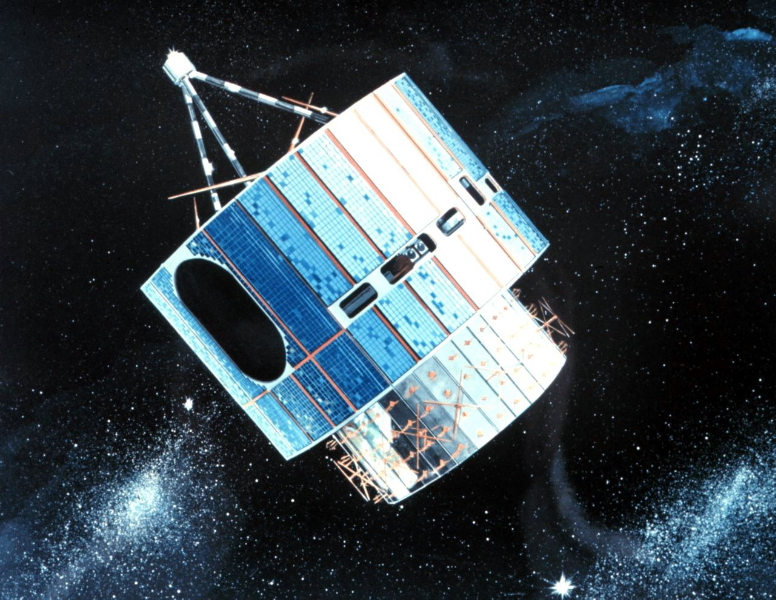An Eye on the Weather
On October 16, 1975, NASA launched GOES-1 – the first Geostationary Operational Environmental Satellite. Over the Indian Ocean, GOES-1 achieved a specific geostationary orbit, approximately 35,785 km (22,236 mi) above the equator, following the direction of Earth’s rotation, matching its rotation period, and appearing to Earth observers to be stationary above. Neat. The satellite stays within view of its ground stations.
Much of the satellite’s outer shell was formed from solar panels that provided the primary source of power for most of the spacecraft’s equipment. GOES-1 monitored radiation temperatures, solar fluctuations, meteorological and cloud cover data. It could transmit images of cloud cover, day or night.

GOES-1 was the first of a family of weather satellites that has developed search and rescue capabilities. The GOES series still orbit above us – now the GOES-R series – keeping an eye on our environment around the world. At the ready & in Real Time, 24/7.
Today, the GOES family is in its latest generation of weather-watching spacecraft. You can even match your wits collecting data for a present day GOES project!
Want a totally awesome weather zapping experience?
Jump into the many weather educational activities, related games, puzzles, crosswords +++ from this compilation of NASA, NOAA, specialized meteorological & atmospheric research sites!
B Bondar / Real World Content Advantage